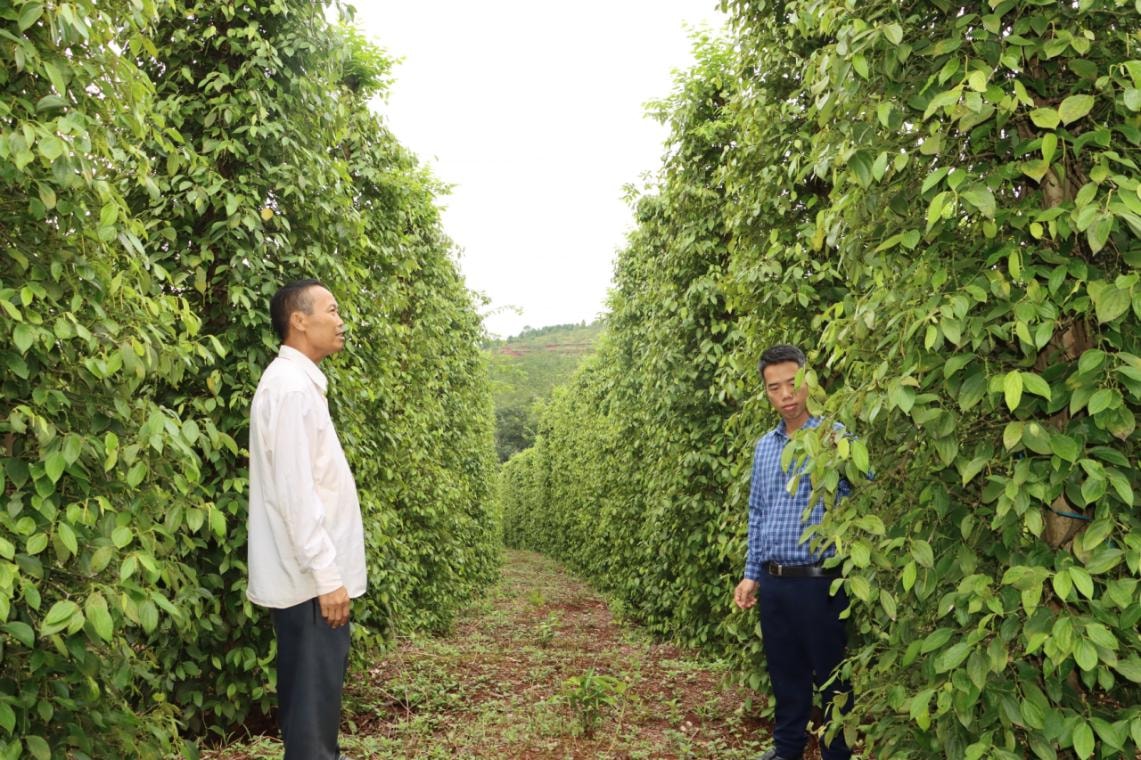Pepper price today April 2, 2025 in domestic market
Pepper prices today in some key growing areas have decreased compared to yesterday. Thereby, maintaining the domestic pepper price level at 157,000 VND/kg to 158,000 VND/kg.
In the Central Highlands region, pepper price today in Dak Lak decreased by 1,000 VND/kg compared to yesterday, currently at 158,000 VND/kg.
Pepper price today in Gia Lai decreased by 1000 VND/kg compared to yesterday, currently at 157,000 VND/kg.
Pepper price today in Dak Nong decreased by 1000 VND/kg compared to yesterday, currently at 158,000 VND/kg.
In the Southeast region, pepper price today in Ba Ria - Vung Tau is currently at 157,000 VND/kg, down 1000 VND/kg compared to yesterday. Dong Nai decreased 1000 VND/kg compared to yesterday at 157,000/kg.
In addition, pepper price today in Binh Phuoc decreased by 1,000 VND/kg compared to yesterday, currently at 158,000 VND/kg.
Note: The above prices are for reference only, the actual price will vary depending on the locality, shipping method, payment method, transaction volume, etc. Readers please contact the nearest pepper businesses and agents for specific advice.

Globally, pepper prices are currently being affected by many factors at the same time. The main cause is the decline in production in major producing countries such as Vietnam, Indonesia and Brazil, due to prolonged adverse weather conditions. In addition, the rapidly increasing demand for pepper in major markets such as the US and Europe, especially in the food and spice industry, is putting additional pressure on global supply.
The high USD is also a positive factor supporting pepper prices in the international market. However, in Vietnam – the world’s largest pepper exporter – supply is currently limited. Many farmers and traders continue to hold onto their stocks after the harvest, selling only a small portion, making the market scarce.
According to Ptexim's forecast, in March, Vietnam may only export about 16,000 - 18,000 tons of pepper. In the first quarter of 2025, the total export volume is expected to reach only 43,000 - 45,000 tons - the lowest level in the past 6 years. This continues to reinforce the trend that pepper prices may remain high in the coming time if supply does not improve significantly.
Pepper price today April 2 in the world market
In the world market, based on quotes from export enterprises and export prices in various countries, the International Pepper Community (IPC) has updated the prices of pepper of all types traded in the international market on April 1 (local time) as follows:
Indonesian Lampung black pepper prices remained stable compared to yesterday at USD 7,239/ton. In addition, Muntok white pepper prices remained stable compared to yesterday at USD 10,066/ton.
Brazilian black pepper ASTA 570 price remained unchanged from yesterday at $7,000/ton.
Malaysia's ASTA black pepper price remained unchanged from yesterday at $9,900/ton. Meanwhile, the country's ASTA white pepper price was also stable from yesterday at $12,400/ton.
Prices of all types of pepper in Vietnam remained stable compared to yesterday. Of which, the price of Vietnamese black pepper 500 gr/l reached 7,100 USD/ton; 550 gr/l reached 7,300 USD/ton.
Similarly, Vietnam's white pepper price remained unchanged from yesterday at $10,100/ton.
Enio Bergoli, Minister of Agriculture of the state of Espírito Santo (Brazil), said that pepper is growing strongly and is quickly becoming the state's third most important agricultural export. Espírito Santo is currently the largest black pepper producing state in the country, accounting for more than 61% of Brazil's total pepper production.
However, despite these significant gains in production and exports, the Brazilian pepper industry still faces a major challenge: Salmonella contamination. This is a common microorganism that can survive on black pepper – which is often consumed without heat treatment – causing many food safety concerns.
Changes in import standards, especially from the European Union, have almost paralyzed Brazilian pepper exports to this market. The main reason is that the requirements for clean food, no chemical residues and ensuring microbiological safety are increasingly strict. In this situation, the Brazilian government is working with private enterprises to find ways to restore key export markets, especially Europe.
Source: https://baonghean.vn/gia-tieu-hom-nay-2-4-2025-tiep-tuc-giam-nhe-10294244.html



![[Photo] Looking back at the impressive moments of the Vietnamese rescue team in Myanmar](https://vstatic.vietnam.vn/vietnam/resource/IMAGE/2025/4/11/5623ca902a934e19b604c718265249d0)

![[Photo] "Beauties" participate in the parade rehearsal at Bien Hoa airport](https://vstatic.vietnam.vn/vietnam/resource/IMAGE/2025/4/11/155502af3384431e918de0e2e585d13a)

















![[Photo] Summary of parade practice in preparation for the April 30th celebration](https://vstatic.vietnam.vn/vietnam/resource/IMAGE/2025/4/11/78cfee0f2cc045b387ff1a4362b5950f)




























































Comment (0)